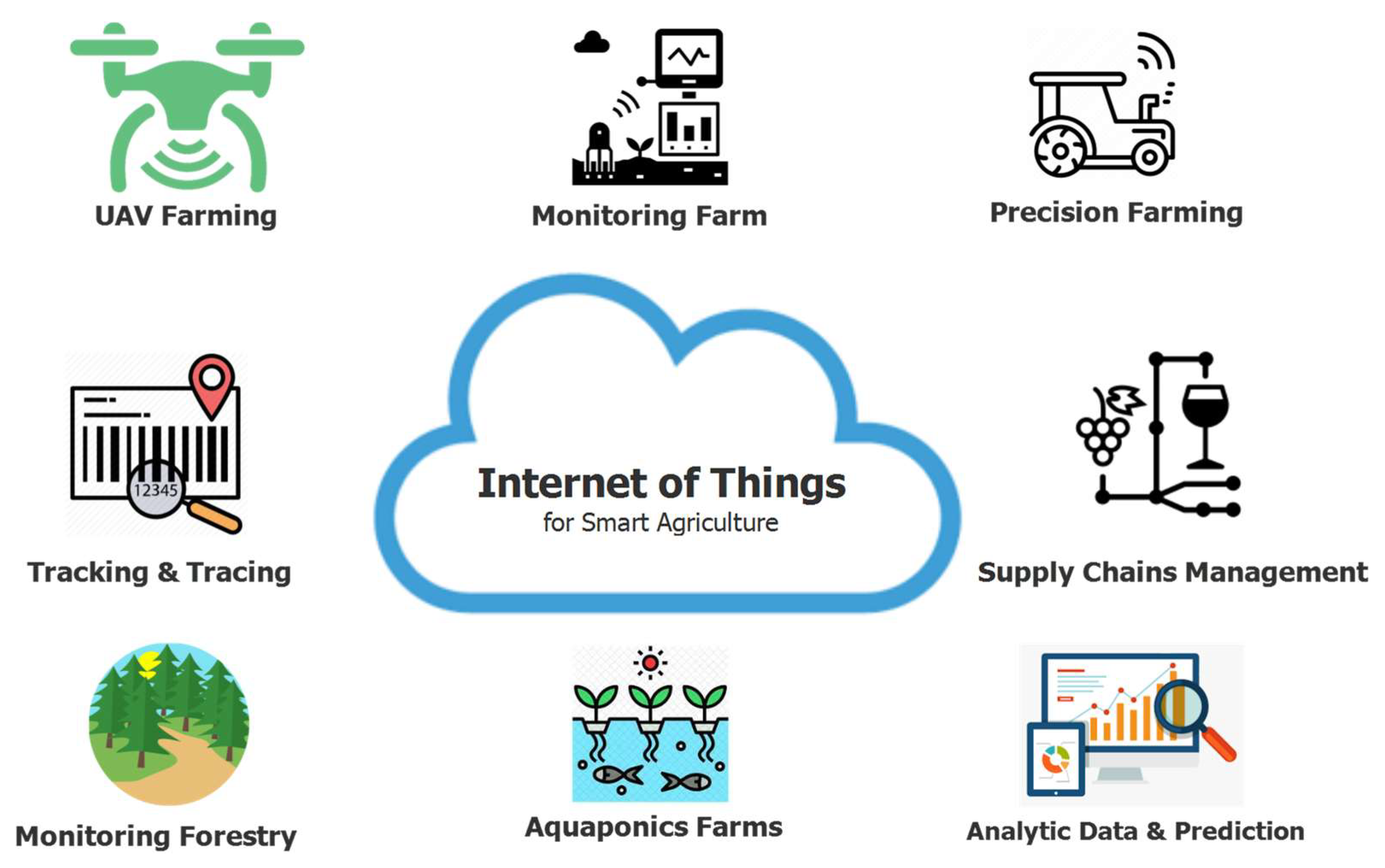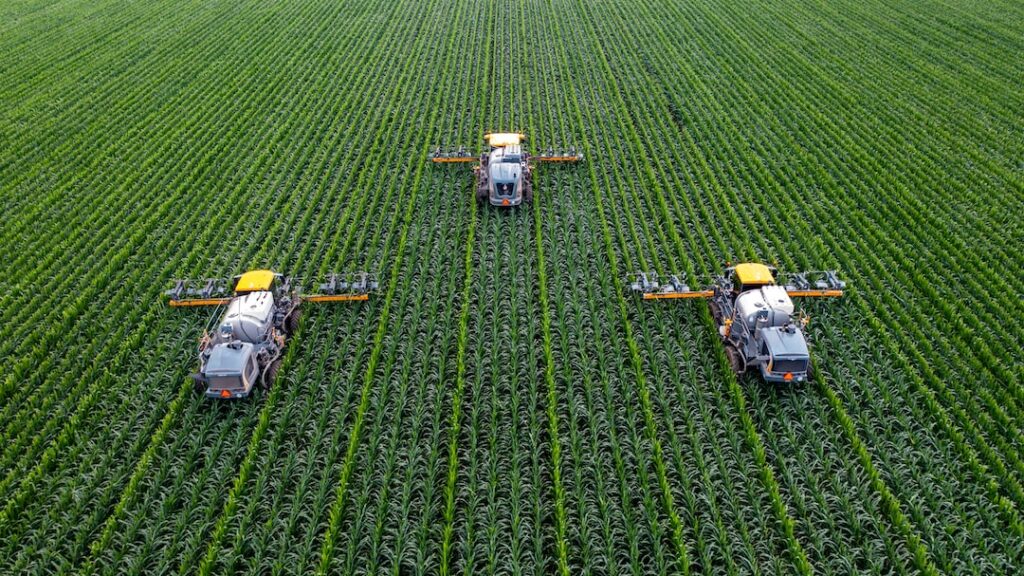How is IoT used in agriculture? Smart agriculture, through the help of the internet of things, has become increasingly popular over the past few years. By leveraging the power of connected devices, farmers can monitor their crops more closely and make better decisions about when to water or harvest them.
IoT can also help reduce costs by providing insights into areas such as energy usage, soil health, and pest management.
In this article, we will explore some of the benefits, types of devices used for agricultural purposes, challenges faced while implementing these solutions, and applications that have already been implemented with great success around the world. So let’s discover together: how is IoT used in agriculture?
Table of Contents
How Is IoT Used in Agriculture?
Smart farming is the use of technology and data to improve agricultural production. It involves using sensors, robotics, drones, artificial intelligence (AI), and other Internet of Things (IoT) devices to monitor crops, livestock, soil conditions, weather patterns, and more.
By leveraging this data-driven approach to agriculture, farmers can increase yields while reducing costs and environmental impact.
IoT Sensors and Robotics
Sensors are used in IoT-based smart farming to measure various aspects of a farm’s environment such as temperature, humidity levels, or soil moisture content. This information is then sent back to the farmer who can adjust their practices accordingly for optimal crop growth.
Additionally, robots are being developed that help with tasks such as weeding or harvesting which helps reduce labor costs associated with manual labor on farms.
Drones and AI
Drones are becoming increasingly popular in agriculture IoT due to their ability to collect aerial images which can be used for precision mapping of fields or monitoring crop health from above.
Artificial Intelligence (AI) algorithms can also be used on these images allowing farmers to identify areas where they may need additional fertilization or pest control measures quickly and accurately without having to manually inspect each field individually.
IoT Devices and Data Analysis in Smart Farming
The Internet of Things (IoT) has revolutionized how data is collected on farms by providing real-time access through connected devices like sensors and cameras that allow farmers an unprecedented level of insight into their operations’ performance.
This data is then analyzed using advanced analytics tools which provide insights into trends over time helping farmers make informed decisions about when best to plant certain crops or apply specific treatments based on experience combined with current conditions monitored by IoT devices.
IoT Applications in Agriculture
The use of the Internet of Things (IoT) in agriculture has revolutionized the way farmers work and manage their farms. IoT devices can be used to monitor crops, livestock, soil conditions, weather patterns, and pest infestations to maximize yields and reduce costs.
How is IoT used in agriculture? Here are some examples.
Precision Agriculture and Livestock Monitoring
Precision farming is a type of agricultural management that uses data from sensors to optimize crop production. By using IoT-enabled sensors on the farm, farmers can measure soil moisture levels, temperature changes, nutrient availability, pH levels, and more. This information can then be used to make informed decisions about when to irrigate or fertilize fields for optimal growth.
In addition to monitoring crops with precision farming techniques, IoT technology can also be used for livestock monitoring as well. Sensors placed on animals allow farmers to track their movements in real-time so they know where they are at all times without having to physically check each animal individually. This helps them identify potential health issues quickly before they become serious problems.
Crop Monitoring and Weather Forecasting
Using IoT agriculture sensors placed throughout a field or farm area, farmers can collect data on soil composition such as nitrogen content and pH level. This information allows them to determine what nutrients need to be added back into the soil for plants or crops grown therein to thrive better than before. Additionally, these same sensors can detect changes in air pressure which provides up-to-date weather forecasts so that farmers can plan if inclement weather is forecasted. In this way, they can take necessary precautions such as covering vulnerable crops with plastic sheeting if needed.
Automated Pest Control
Automated pest control systems use IoT-enabled cameras to detect pests such as rodents or insects within a certain radius of the camera. This triggers traps set off by motion detectors nearby, eliminating any potential damage caused by these pests without requiring human intervention, making it much easier than traditional methods used previously.

(Source)
Overall, IoT technology has been instrumental in helping modern-day farmers increase efficiency while reducing costs associated with running their operations, thereby improving overall profitability margins significantly over time compared to those achieved through traditional methods alone.
Challenges of Implementing IoT in Agriculture
The implementation of IoT in agriculture has the potential to revolutionize the industry, but several challenges must be addressed before it can reach its full potential.
How is IoT used in agriculture? And what are the challenges in implementing it?
Cost of Equipment and Installation
The initial investment required for implementing IoT in agriculture can be quite substantial due to the cost of buying and installing all the necessary equipment. This includes sensors, drones, and smart farming platforms which may not always fit within an organization’s budget constraints.
Furthermore, some agricultural operations may require more specialized hardware than others depending on their size or type of crops being grown; this could further increase costs if custom solutions are needed.
Data Security and Privacy Concerns
As with any system that involves collecting data from users or customers, ensuring that this information remains secure is paramount when implementing IoT in agriculture. Sensitive details such as crop yields or irrigation schedules should only be accessible by authorized personnel. Otherwise, they could potentially fall into malicious hands if not properly protected against cyberattacks or other forms of exploitation.
Additionally, measures should also be taken to ensure that customer privacy is respected at all times while using these systems so as not to violate any laws regarding personal data protection regulations set forth by governments around the world.
Despite the challenges of cost, security, and personnel, IoT technology can still be a valuable asset to agriculture when implemented correctly.
Conclusion
How is IoT used in agriculture? IoT solutions are incredibly powerful tools that can help farmers increase efficiency and productivity while reducing costs. It has the potential to revolutionize the way we grow food and manage our resources.
With its many benefits, applications, and future outlooks, it is clear that IoT will continue to play a major role in agricultural production for years to come.





